As part of our Tools Under 30 Dollars Gift Guide Series, we’re showcasing an essential tool for folks taking their first step into DIY automotive maintenance.
The humble oil filter wrench.
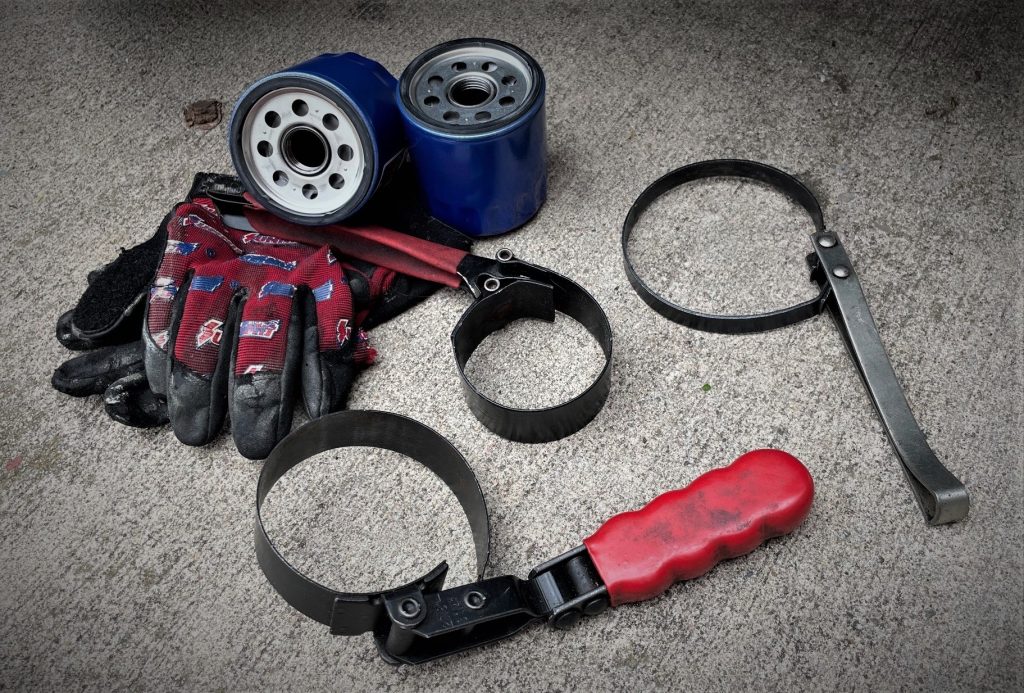
What is an Oil Filter Wrench?
An oil filter wrench is a specialized tool that’s designed for removing and installing canister-style, spin-on oil filters. And though maintenance intervals vary by vehicle make/model, most of the engines we’ve come across require a filter change with every oil change.
So yeah, you’ll probably need one of these wrenches every 3,000 miles or so.
Typical spin-on oil filter wrenches like the ones pictured here consist of a metal band that self-adjusts against the filter housing as you turn the handle. For this reason, you’ll usually have to flip the orientation of the wrench around, depending on whether you’re tightening or loosening the filter, but that’s easy enough to get the hang of.
More importantly, you probably don’t want to use a wrench like this to tighten down the filter. In most applications we’ve come across, getting the filter snug with just your hand works well enough to avoid over-tightening the canister, which can save you some frustration later on, when it’s time to take the filter off.
Since engine oil filters come in a bunch of different sizes, so do oil filter wrenches. And many oil filter wrenches can accommodate a range of filter sizes, because they will self-tighten to the sides of the filter as your rotate the handle around. (That’s good news if you’ve got a diverse mix of vehicles in your family motor pool.)
That means you should assess the size of the filters you vehicles use. Most spin-on oil filter manufacturers will give you the outer diameter (OD) measurement, which you can then use to determine the size of oil filter wrench you’ll need.
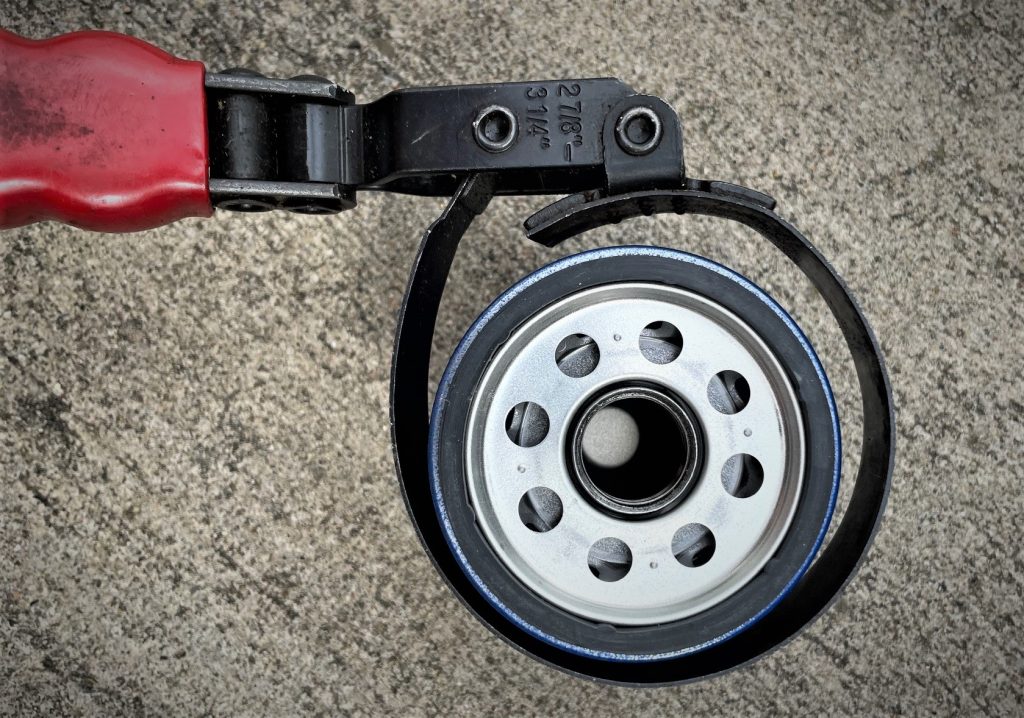
Other Types of Oil Filter Wrenches
Beyond the traditional style wrenches pictured here, there are a handful of other flavors on the oil filter wrench menu, and they all have their own pros and cons.
Strap-style oil filter wrenches can be pretty versatile. They work the same way, but instead of a metal band/collar, they use a flexible strap that ratchets tight to the oil filter body. This feature makes them really handy for odd filter sizes wedged in tight spots. As an added bonus, strap wrenches can be used for other applications, like tightening tubing or pipe sections too. The drawback with strap-style wrenches is that they can be cumbersome to use and you have to ensure they’re really tight for a good grip—which may dimple the relatively thin metal of an oil filter housing if used improperly.
Another popular option are pliers-style oil filter wrenches—though we’ve found that these wrenches are most useful when removing stubborn, stuck, or over-tightened oil filters that were…perhaps installed by the rookie shop tech. In our experience, a standard oil filter wrench will work fine for most of the jobs we’ve come across.
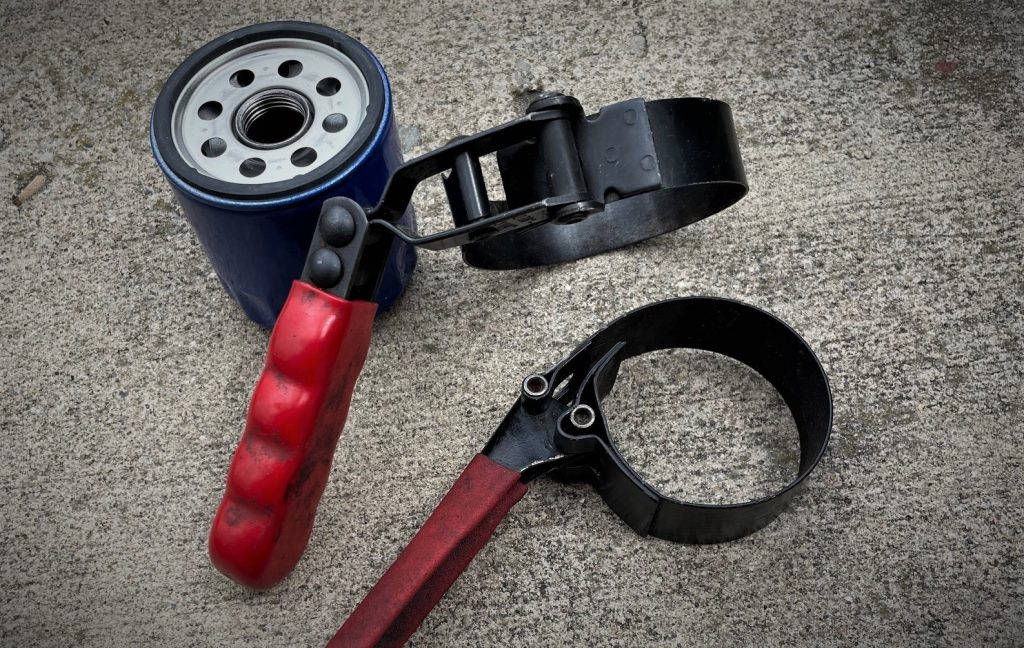
What’s Better: An Oil Filter Wrench or Oil Filter Socket?
There’s a final topic worth discussing here too. A while ago, we introduced you to this tool’s equally-important counterpart, the oil filter socket.
While both an oil filter wrench and an oil filter socket are both pretty handy, truth is, there are situations where one (or the other) simply won’t work, given the space requirements inside your engine bay.
That said, it’s usually not a question of which one is better, rather which one works for your application.
So you should take a peek at where your engine’s spin-on oil filter is located—sometimes both will work great, and sometimes either an oil filter wrench or an oil filter socket will work best.
You can see what we mean in the three pictures here:
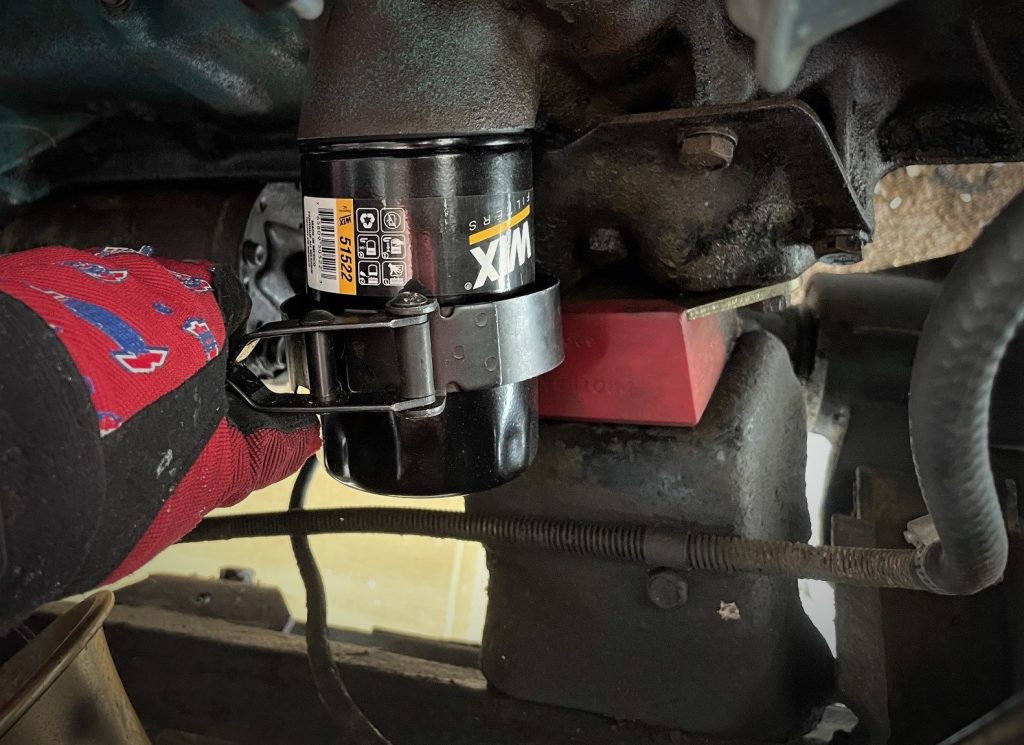

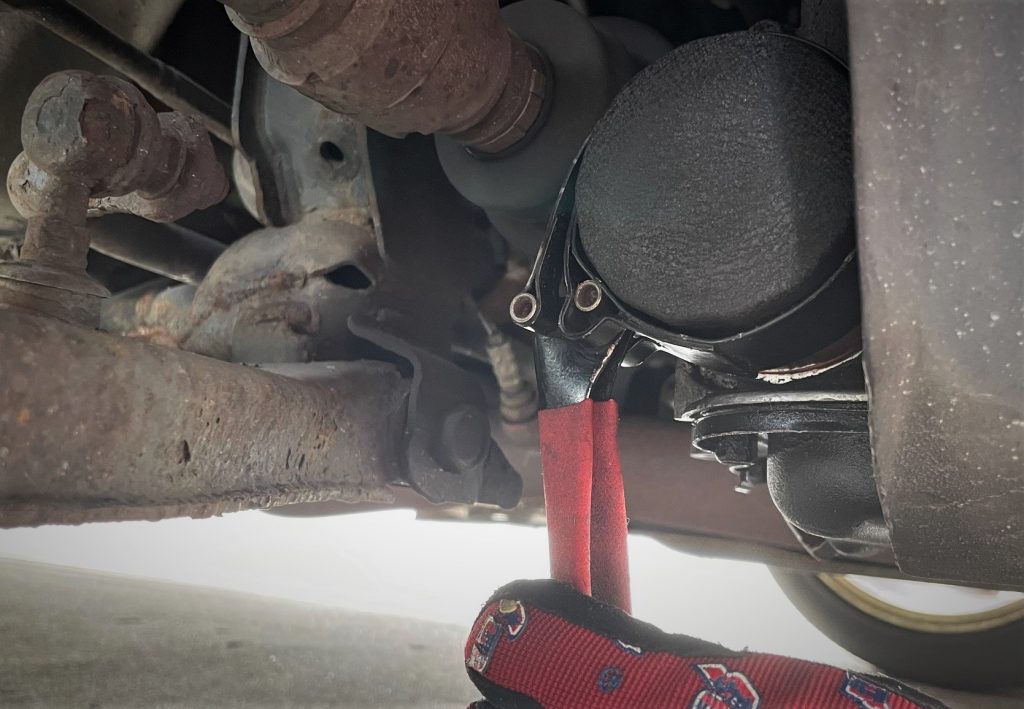
***
Depending on your vehicle, spin-on oil filter wrenches can be an absolute necessity if you want to start doing your own oil changes. And considering how handy they are, they can be great gifts to give AND receive. But the best news is, oil filter wrenches are relatively cheap too. In fact, you shouldn’t have any trouble finding a good oil filter wrench for well under 30 bucks.

Comments